|
|
|
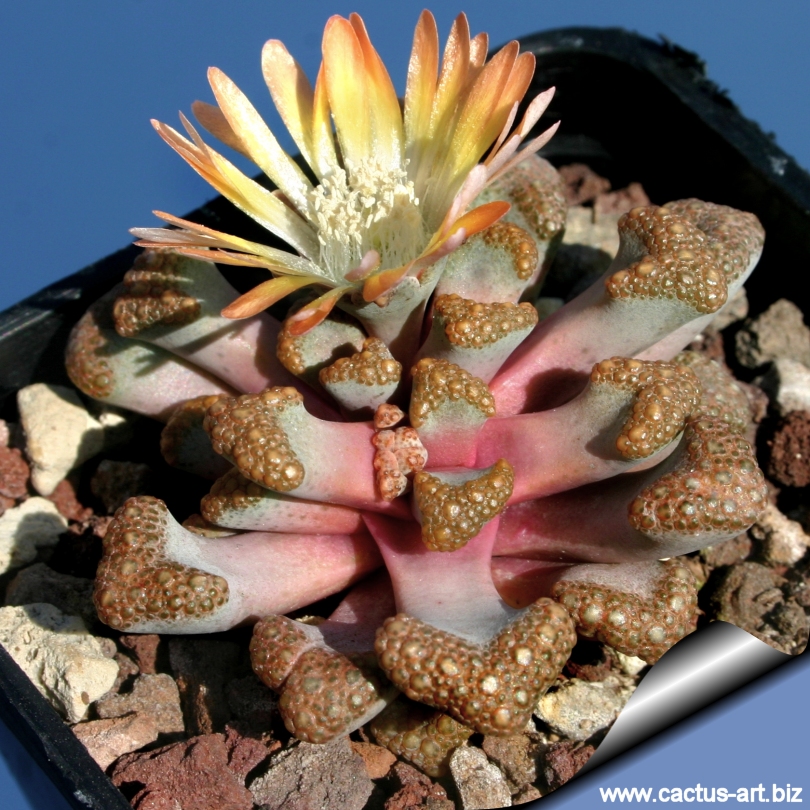
T.
hugo-schlechteri
The plants of this species have “reptilian”
leaf tips and are amongst the more colourful succulent.
They are indeed quite variable,
depending on origin, clone and sun exposure.
|
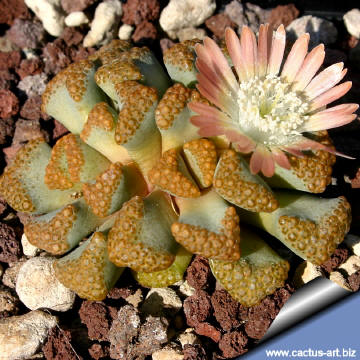
A rare pink flowered specimen and ... |
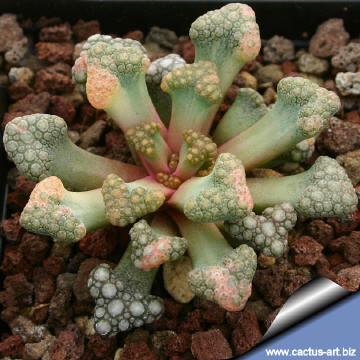
... a rarer variegated one. |
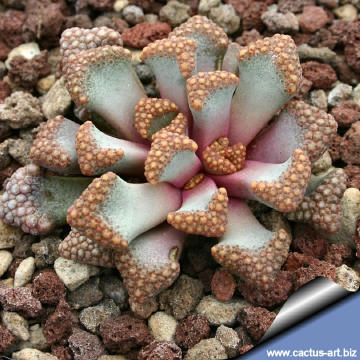 |
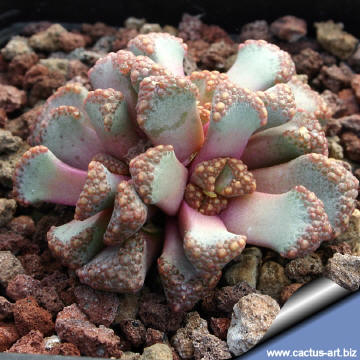 |
|
Genus Titanopsis: There are three to six
species, depending on botanists' opinions. Some botanists have now
lumped T. lüderitzii and T. primosii in with T. schwantesii.
The species list for Titanopsis is considered to be:
|
|


Advertising
|
|
|
|
|
Family: Mesebrianthemaceae (Aizoaceae)
Scientific name:
Titanopsis
hugo-schlechteri (Tischer) Dinter & Schwantes
Origin: South Africa
(Great Namaqualand), Namibia
Habitat: This is one of a few
species that seeks out alkaline areas; lives in predominantly limestone
outcrops
and is almost covered in grey-white and variously coloured warts
and incrustation on the leaves. This is probably a rare case of
protective coloration in plants akin to that found in the animal kingdom
and these plants blend in well with their surroundings.
The invisibility of such plants in their desert home is really
remarkable and in the dry season they camouflage to such an extent
that they can only be spotted by the keenest eye.
Etymology: The genus name Titanopsis is a
combination of "Titan"= "sun", and "opsis"=
"appearance", referring to the sun-like appearance of the
golden-yellow flowers which open in winter. The specie
hugo-schlechteri has been named after Hugo
Schlechter, German lithographer, father of the botanist Rudolf
Schlechter.
Common English Names include:
Jewel
Plants or Living Rock
Synonyms:
- Mesembryanthemum astridae
- Verrucifera hugo-schlechteri
- Mesembryanthemum
hugo-schlechteri
|
|
|
|
Description: T. hugo-schlechteri is a multi-headed rosette
succulent plant, it will form small mats as it ages. Individual rosettes
are approx 4-5 cm in diameter.
Stem: Stem-less or very short-stemmed.
Root: Fleshy taproots.
Leaves: Approx 2 cm long, crowded, with
sculptured triangular/spatulate tips covered with pebbly flattish bumps.
The colour of the leaves is very variable, depending on environmental
and individual factors and comprises pale an dark green, blue, grey, red
and purple while the wart vary from white to reddish-brown. The upper
surfaces of the leaves are windowed and permit the underground part of
the plant to receive the solar light and also their colouration mimic
small, shining pebbles helping the plant to blend with the surroundings.
Flowers: Small daisy-like, yellow to orangish (occasionally pink)
they last for several days and the colour varies as they ages taking a
darker tone.
Blooming season: Winter.
|
|
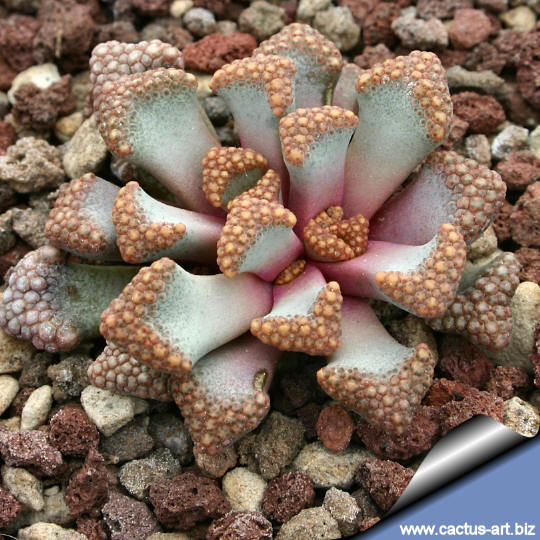
This species is a truly impressive living rock, with unique leaves
with very variable colourful "warts" on their ends, making them blend
well in the rocky areas of South Africa where they are native.
Coltivation: This species
in spite of its great beauty,
pass as unworthy of cultivation because it is a winter grower,
nevertheless it is easy to grow and clumps
readily, forming a beautiful succulent mat.
Titanopsis grow well during the
autumn; needs moderate
water when growing in late fall and early spring. Keep somewhat dry the
rest of the time. Like all living rocks, they thrive in porous soils
with excellent drainage. They can tolerate high heat and heavy frost
(hardy to -10° C). It is a very rewarding succulent,
and can be cultivated in desert gardens in warm
climates or in greenhouses or windowsills in the home. Enjoys
bright shade in summer and full sun in the other
seasons.
Propagation: They grow quickly
from seed that germinates in 1 - 2
weeks or by division of larger clumps.
|
|